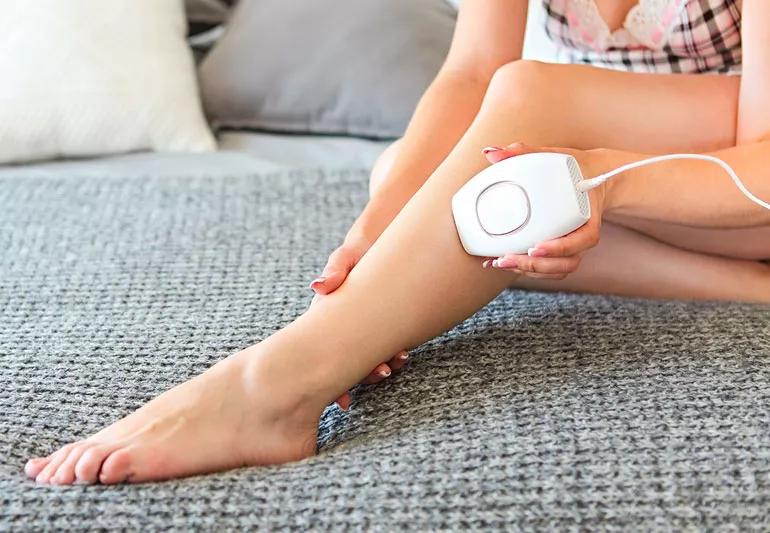Does it work and is it safe?
Some DIY beauty tricks are totally worth it. You can save time and money by dyeing your roots or plucking your brows in the comfort of your bathroom. But laser hair removal?
While the procedure used to only be available in the dermatologists office, these days you can buy small devices to zap away hair yourself.
But before you kiss your razor goodbye, find out what dermatologist Rachel Ward, MD, has to say about the safety and effectiveness of these devices.
Permanent hair removal
Laser hair removal devices work by killing the hair follicle. But hair grows in cycles, and the lasers only damage follicles during an active cycle of hair growth. So it takes multiple treatments, about a month apart, to completely stop hair from regrowing.
For some people, laser hair removal is not entirely permanent. You might need a maintenance treatment every year or so to keep stray hairs from cropping up.
The process doesnt come cheap. Professional laser hair removal can cost a couple hundred bucks per treatment, and it might take half a dozen sessions (or more) to knock out every follicle. You could rack up more than a thousand dollars in pursuit of a bald bikini line.
Meanwhile, you can order an at-home hair removal laser for somewhere in the neighborhood of $400 or $500. At first glance, it seems like a better investment. But there are some important caveats, Dr. Ward says.
At-home laser hair removal: Pros and cons
There are two types of at-home devices for hair removal. One is a true laser, and the other uses intense pulsed light. Both types remove hair, and both are less powerful than the device youll find at the dermatologists office, Dr. Ward explains.
Thats good and bad. On the one hand, with less power comes less responsibility. These devices are safe for amateurs to use at home, so you dont have to worry about singeing yourself in the name of smooth skin. (Still, make sure you follow the directions exactly because laser.)
But with less power also comes less effectiveness: The at-home devices dont work as well as the pro models.
More downsides: Its hard to cover a lot of territory like an entire leg with the small at-home devices, Dr. Ward says. And they might not be strong enough to get completely hair-free. Over multiple sessions, youll reduce the amount of hair you see but it probably wont be a home run, she says.
Who should try at-home laser hair removal?
One of the biggest drawbacks to at-home laser hair removal? The tools only work on a narrow range of hair and skin colors. The lasers zero in on pigments in the hair follicle and are only effective when theres a lot of contrast between skin and hair. That means the systems are recommended for people with light skin and dark hair.
In people with darker skin, theres a risk of burns though to prevent that, many at-home devices have sensors that block them from working on darker skin.
If you dont have the pale-skin/dark-hair combo, professional lasers are the only option. The lasers we use in the dermatology office are more sophisticated and can be used in patients with skin of any color, Dr. Ward says.
Laser hair removal safety
If you have the right hair and skin tones, the devices are generally safe to try, Dr. Ward says. But its important to use them correctly.
DONT use them:
- Near your eyes (though the upper lip is OK).
- Over tattoos or pigmented areas, including moles.
- In the genital area (but you can safely target the bikini line).
When doing the math, consider that at-home devices might have limited battery power or contain light cartridges that will need to be replaced, Dr. Ward says. And no matter how often you use them, you might never achieve total hairlessness.
It depends on the person, but professional hair removal usually gives you a bigger bang for your buck, she says.
Learn more about our editorial process.







































